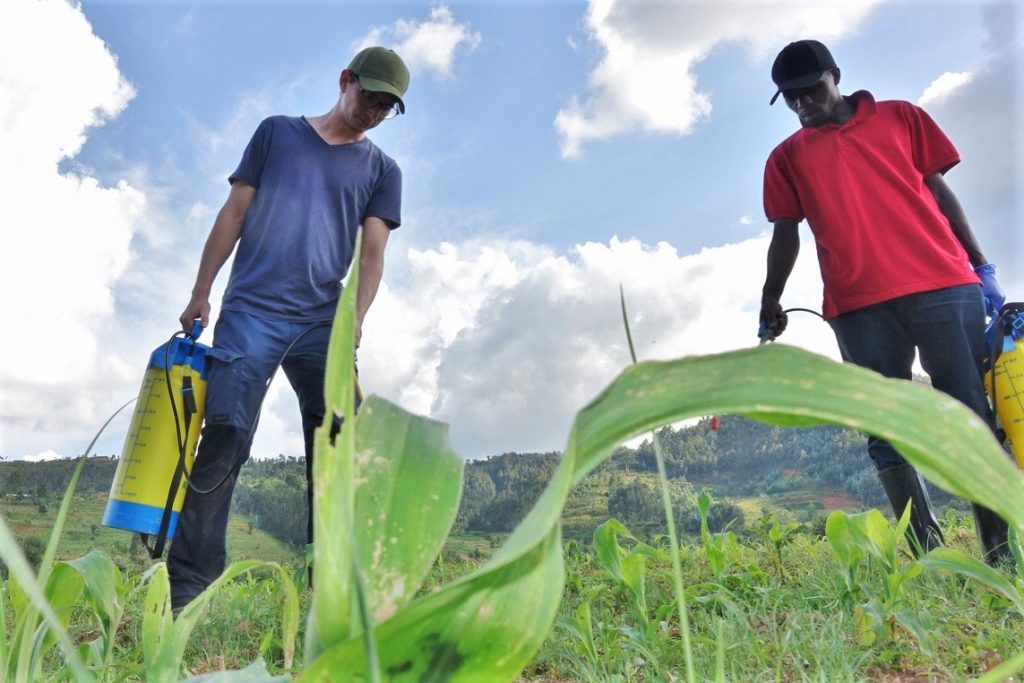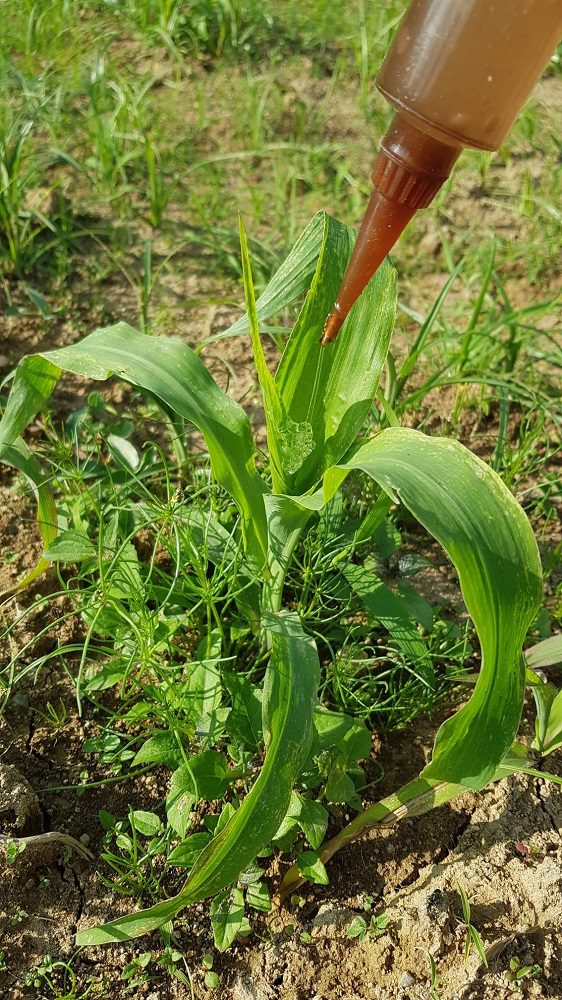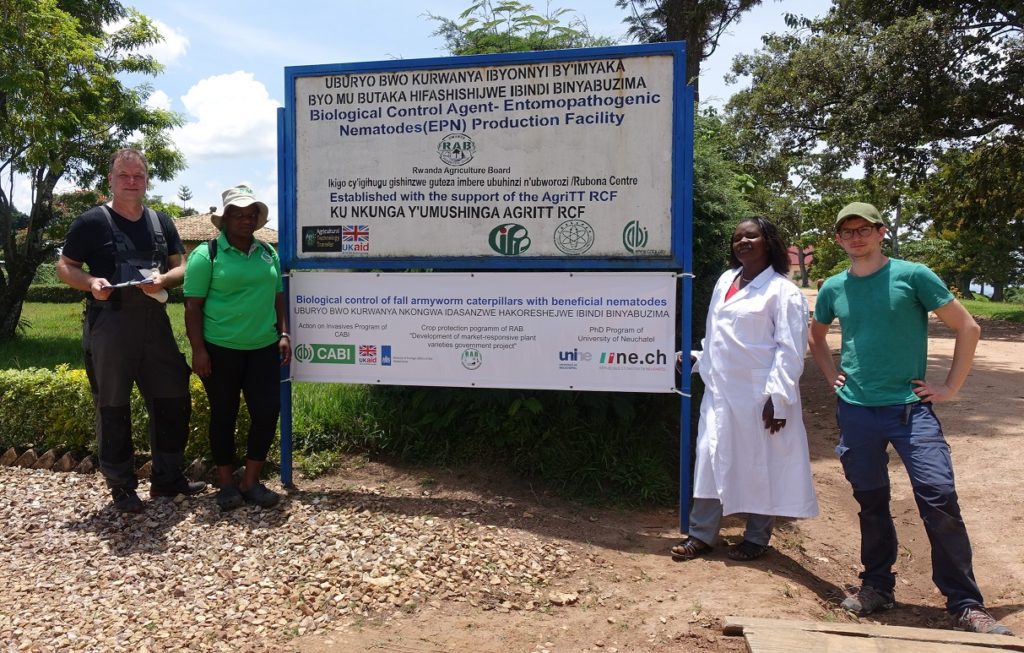April 27, 2020

A PhD student from the University of Neuchâtel and CABI in Switzerland is collaborating with plant protection scientists of Rwanda Agriculture and Animal Resource Development Board (RAB) and farmers to find a viable biocontrol solution for the devastating fall armyworm (FAW) as part of an Integrated Pest Management (IPM) strategy against the pest causes serious damage on maize crops.
Student Patrick Fallet travelled with CABI’s biocontrol scientist Dr Stefan Toepfer to Rwanda, a country where maize is a priority crop but its production challenged by FAW infestation, to test the viability of nematode-based solutions under real farming conditions.
The scientists, together with experts from RAB and local farmer cooperatives, conducted four field experiments in heavily-infested fields in the RAB Rubona Station and Nyamagabe district. They sought to test numerous nematode formulations and application techniques – based upon initial experiments at the University of Neuchâtel – that included gels, beads, oils, sand and just water.
They revealed that gel formulations of nematodes applied into the maize whorl are currently the most promising application and were found to be just as effective as pesticide sprays.

Gel formulations of nematodes applied into the maize whorl are promising for the biological control of fall armyworm (Photo: S. Toepfer)
Dr Toepfer said, “The aim is to reduce the increasingly frequent pesticide sprays in maize by using biological control solutions. Until recently, maize has been rarely sprayed with pesticides in Africa and Asia, which has changed since the invasion of the Fall armyworm.
“There are several biological control agents against fall armyworm including insecticidal nucleopolyhedrosis viruses, Bacillus thuringiensis kurstaki or aizwai bacteria as well as a number of entomopathogenic nematodes.”
Patrick Fallet said, “The challenge is to apply the nematodes in a way that they remain alive and stay in the maize whorl, so that they can attack the present fall armyworms and even the next generation of caterpillars.”
Nematodes used here are entomopathogenic nematodes which are also called insect-killing or simply beneficial nematodes. They are tiny worms that exclusively multiply inside insects, Dr Toepfer says. Indeed, they have nothing to do with plant parasitic nematodes, or human-attacking worms, which are a totally different groups of worms.
Dr Toepfer added, “Entomopathogenic nematode products are the third most traded group of biocontrol agents (after Trichogramma wasps, and Bacillus thuringiensis products). They are usually applied against root pests, but, as we show, can also be used against leaf feeding caterpillars such as the fall armyworm. Because nematodes are usually soil organisms, the above-ground feeding caterpillars have little evolved defence against them.”
The FAW pest originates from south America, but is now causing enormous yield losses across Africa as well as in southern and parts of eastern Asia including China. Particularly, its caterpillars are voracious in devouring maize leaves and destroying the plant’s vegetation point. One single caterpillar can destroy a whorl of a maize plant and can lead to failure of gaining any yield from the plant if not controlled.
The Rwanda Agriculture and Animal Resource Development Board has good biocontrol expertise an entomopathogenic nematode biocontrol mass production facility due to recent technology transfers from China to Rwanda. For more information see the study brief: ‘From China to Rwanda: successful transfer of biocontrol for soil insect pests.’

Biocontrol facility at Rwanda Agriculture and Animal Resource Development Board RAB in Rubona in Rwanda (Photo: J. Guenat)